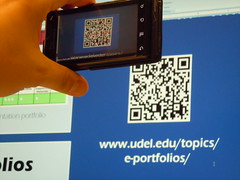In my
presentation about how educators have been collaborating in our school, sharing resources, ideas, connecting, interacting, my first slide is about
abundant and
scarce resources in our workplace.
First answer from the audience about scarcity in an educational setting?
TIME.
For me?
INITIATIVE!
Some people are willing to follow, but not to start a movement, for action means having to deal with failure/success.
Also, most resist. Resist bravely. Reasons for not changing?
I guess the main point has to do with our own limitations, weaknesses. When there's change, we'll be dealing with the unpredictable, the moving sands until we get to solid ground. It's about touching the unknown.
For some, it means excitement, the feeling of a fresh start, some rain after dry season to start a blooming season.
For others, a shake in the building blocks of our fixed ideas and values. Change in the status quo, in the rules of the game. Much more so when we are talking about change that brings abundance through social media.
Not long ago, there was much more institutional control over the handouts, exercises, materials teachers were producing. Even because of physical constraints, there was a limit to what teachers could produce and share. Now, with our online shared space, a wiki, thousands of files have been produced. The
scarcity X
abundance balance is disrupted. We now capitalize in our scarce resource TIME, for many educators are producing and sharing resources that would be done individually in the past. However, it is argued that quality is sacrificed in the name of
abundance. True up to a certain point. Surely the resources have different levels of quality in terms of content and design. But, haven't we always produced content for the classroom? In the past, nobody would see it, now there's a social control of these shared educational resources in an online collaborative space.
Our challenge now is to keep moving forward in this new digital paradigm shift and understand that the resources that are shared is the group's shared effort. Thus, these resources should be improved, remixed, re-purposed to be made even more useful and appropriate to our learners.
Now we're talking about another issue in the mix - digital literacy. Digital is totally
abundant, literacy is still the
scarce part of the equation, for it involves not only the development of the functional/technical expertise in relation to the digital world, but also the critical view on the use of digital educational resources, which certainly takes time. It is a process that will add the equilibrium to the equation of
abundance of digital resources x their quality once educators enhance their digital literacy skills.Also, it will give another mindset to the new users/producers of content in the sense of understanding that there's no problem to get somebody's work and remix it for a different group of students with specific needs and unique interests. What's there is not MINE, it's OURS. Let's make this social construct even more exciting.
...And we're back again to the scarcity of INITIATIVE...
No problem! I don't give up and keep trying to inspire my colleagues to move on. Nowadays in a much more one-to-one, minimalist, subtle way than in the past of one-size-fits-all type of teacher training. The way we share has changed into a much more abundant, non-linear way, so has the approach we should take to teacher training and the development of everyone's digital literacy skills.







